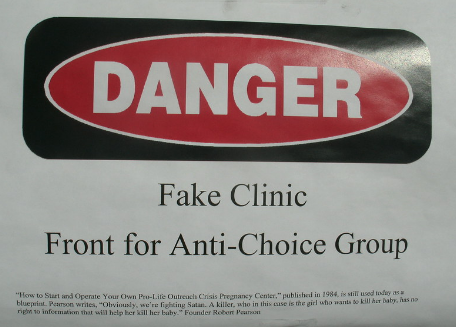
The Fake Abortion Clinics That Mislead Patients

You’re well aware of the dire state of reproductive justice in the United States. You know that recent legislative moves such as the so-called “Heartbeat Bills” and the reduction of funding for Planned Parenthood severely threaten the lives of all folks capable of pregnancy or experiencing health conditions that affect the female reproductive system.
But there’s another threat to reproductive justice which works in tandem with these laws. Because even as abortion access gets choked by a million restrictions, Crisis Pregnancy Centers proliferate.
CPCs, also known as “fake abortion clinics” or, euphemistically, “Pregnancy Resource Centers” are essentially anti-choice hubs of misinformation. Often located in close proximity to an abortion-providing women’s health center such as Planned Parenthood, they aim to reach pregnant, option-seeking people before they make the choice to terminate. Many are religiously affiliated. However, as nonprofit organizations, they are also eligible to receive Title X funding.
In New York City, CPCs must adhere to legal guidelines intended to ensure that visitors are aware that they are not entering an abortion clinic, or even a medical center. New York City Local Law 17 requires these offices to display disclosure statements in both English and Spanish, advising visitors that they do not employ licensed medical professionals, and thus conveying that they will be receiving social services, but not medical services. However, Centers outside of NYC are entirely unregulated, as they are not technically medical centers or businesses. Even so, they can and do interfere with the health of their “patients.”
One comment on “The Fake Abortion Clinics That Mislead Patients”
Comments are closed.




We need to take a page from the anti-choice playbook and picket these clinics, not to prevent women from entering or to shout at them, call them names and berate them like the anti-choicers do. Instead, we need to make sure every woman is informed about the treatment — or lack thereof — that she’s about to receive so that she’s not blindsided and knows there are nonjudgmental alternatives available.